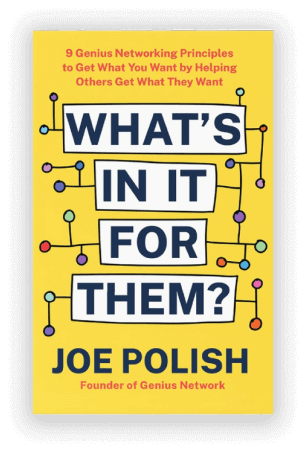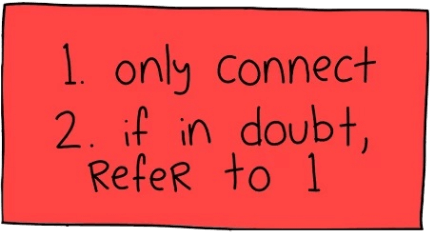The Greatest Business Decision of All Time With Verne Harnish
Episode Summary
In this Episode, you’ll Discover the Greatest Business Decision of All Time, the 7 – 70 Rule, what woodcarving can teach you about being the dominant player in your industry, and more with Verne Harnish.
Verne Harnish is founder of the world-renowned Entrepreneurs’ Organization (EO) and chaired for fifteen years EO’s premiere CEO program, the “Birthing of Giants” held at MIT. Founder and CEO of Gazelles, a global executive education and coaching company with over 150 coaching partners on six continents, Verne has spent the past three decades helping companies scale-up.
Recorded Live from the Genius Network Annual Event.
If you would like access to the full feature video presentation, the special resources, and show notes for this episode, please visit GeniusNetwork.com/20.
Here’s a glance at what you’ll learn from Verne in this episode:
- Why going after the “low hanging fruit” will DESTROY your margins and commoditize you faster than any single decision you could make (Verne shares what to do instead)
- Verne explains the “7-70 Rule” that is at the heart of super-success (Ignoring this rule is what causes many businesses to fail)
- The strange (and profitable) reason why you should only strive for a few percent of your marketplace (This is a secret utilized by the largest companies in the world like Apple and Walmart, and it can work equally well for you too)
- An overlooked business key that makes you money NOW…and… it’s also the key that most business owner make the WRONG decision about! Verne shares what it is and how to get it right.
- What could woodcarving possibly teach you about becoming the dominant player in your market?! You have to hear what Verne shares here…
- The most important pivot you’re going to have to make in your business…and…the reason why you have to make this pivot IMMEDIATELY if you want to stay ahead of your competitors
- There’s always a segment of a market, no more than 7% to 10% of the total market, that represents an inordinate amount of the profitability in that industry. Here’s how to find it, capture it, and capitalize on it…
WHAT'S IN IT FOR THEM?
Get the first chapter for FREE and a limited-time viewing of "Connected: The Joe Polish Story"
Show Notes
- 02:01 Before talking about the 7/70 rule, Verne discusses two really bad non-decisions that most business leaders make.
- 02:06 “The first one is to allow your sales channel to go after any low hanging fruit you think that they can garner. That will commoditize and destroy your margins faster than any other single non-marketing decision I’ve seen entrepreneurs make.”
- 02:36 IKEA, world’s largest furniture distributor 28.5 billion Euros has a total combined market share of 6.8%
- 02:51 When Apple hit their highest point before Steve Job’s death, their entire market share was only 7%. However, this 7% represented 50% of the entire profitability of the global industry market.
- 03:25” I want to be crystal clear, that you really only want a few percent of the marketplace. You don’t want it all. But your key decision is you, and you alone, have to figure out what that list is. “
- 03:37 Sam Palmisano, of IBM. Found out the top 100 customers of their strongest competitor and wrote out their names and gave them to his team. Every day he had one question for them: Who did you get on that list today?
- 04:47 “First thing you need to do, figure out your 7%. Then I want you to dominate that 7% by 70%.”
- 04:55 Walmart today, the largest retail company in the world, has just under 10% global market share yet they own 63.6% within the niche that they’re in, which are these big box warehouses. So that’s where the 7/70 rule comes in.
- 05:12 Take the story about Ahli, who had been carving wood since he was a kid. At the age of 55, decided to specialize carving wooden doors for Christian churches. Today he owns 70% of a very narrow niche of the church door carving business. He’s the go to guy.
- 06:00 “You can imagine how nice it is to have customers waiting in line for you to serve them.”
- 06:06 It all comes down to supply and demand. From World War II until 2007 we had more demand than supply. After 2007 we have more supply than demand.
- 06:34 “There are 1.4 billion people moving into the middle class between now and the year 2020, and they are slightly hungrier than most of us in this room. “
- 07:16 “You in this room have to make the most important pivot you’ve ever made in business history.”
- Move from obsessing on the supply side of the business (better, faster, cheaper)
- Now you need to spend 80% of your time on the demand side of your business.
- 07:25 Rick Kash, Vice Chairman of Nielson story: Because of demographics we now spend more money on our pets than we do our children in the United States.
- 07:32 For example, Take one of the hottest franchises, Dogtopia, created by Peter Thomas, that just won franchise of the year.
- 07:53 You need to ask yourself: “What is the question your industry is organized around?” In that industry, it was the size of your dog.
- 08:03 Peter asked a different question: “What is the relationship of the owner to it’s dog?”
- Whenever you do this you find a set of different segments of the market that no one else has looked at.
- Always, there will be one segment (7-10%) that represents an inordinate amount of the profitability of that industry. In this case it happened to be a segment called performance fuelers.
- 08:28 The answer to Peter’s question revealed a segment of dog owners that are active and want their dog with them.
- They found that this segment represents 7% of the entire dog ownership market, yet represents 25% of the profitability.
- 08:44 The next step is to formulate a 100% solution for that segment, which this company did.
- 08:48 “When you know the persona of this 7% your marketing costs plummet.”
- 08:57 “The second worst decision you can make is to get obsessed on the cost side.”
- 09:24 “We spend all this time on the cost side of our business. How much time do you spend on this one critical marketing decision, which is price? Truth is, we kind of lick our finger and put it to the wind.”
- 09:42 How many of you have read a book, attended a course, on strategic pricing? It’s the one “P” of the four “P’s” of marketing that makes you money NOW.”
- 09:58” I have an MBA and never took a single course in pricing.”
- 10:11 If you want to combine the two worst decisions ever made, it would be:
- Number one: Letting your salespeople call on anybody that they want to.
- Number two: Letting them name price.
- 10:24 You must take control of both of those decisions.





